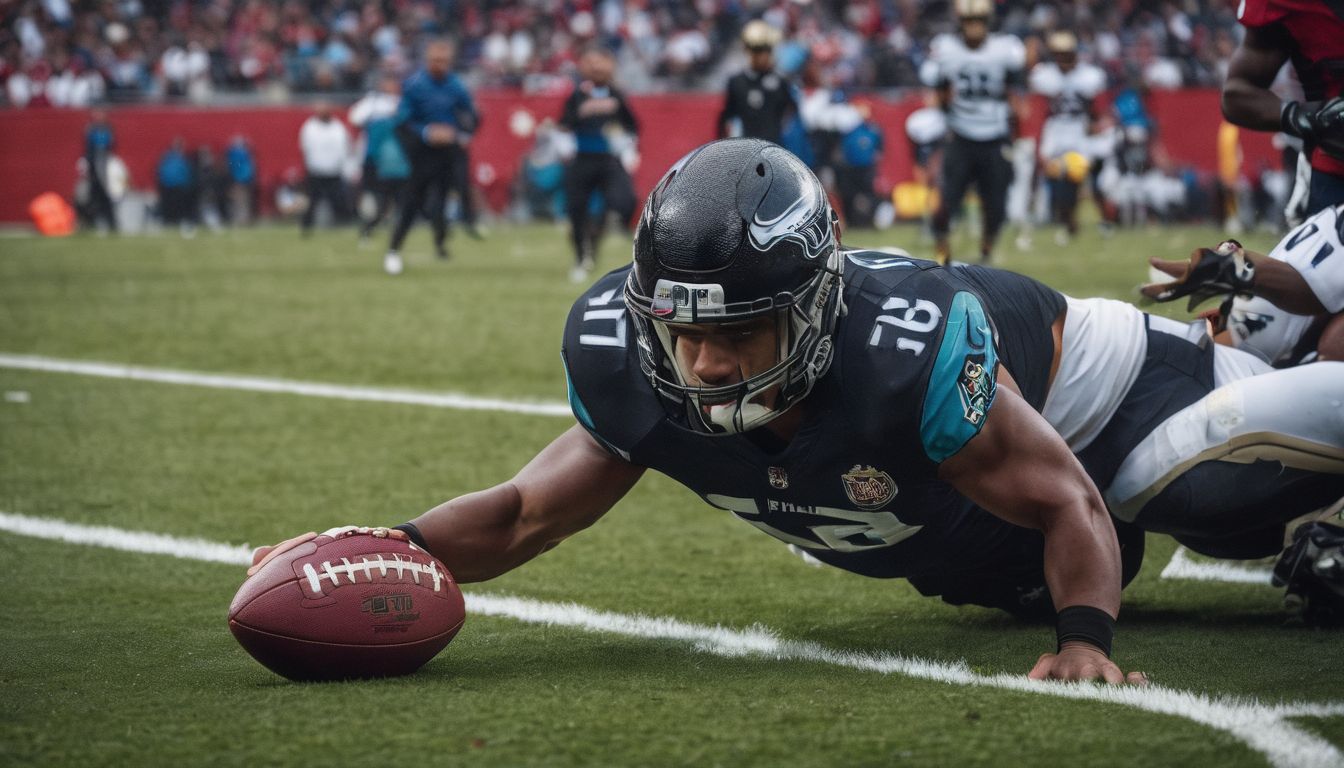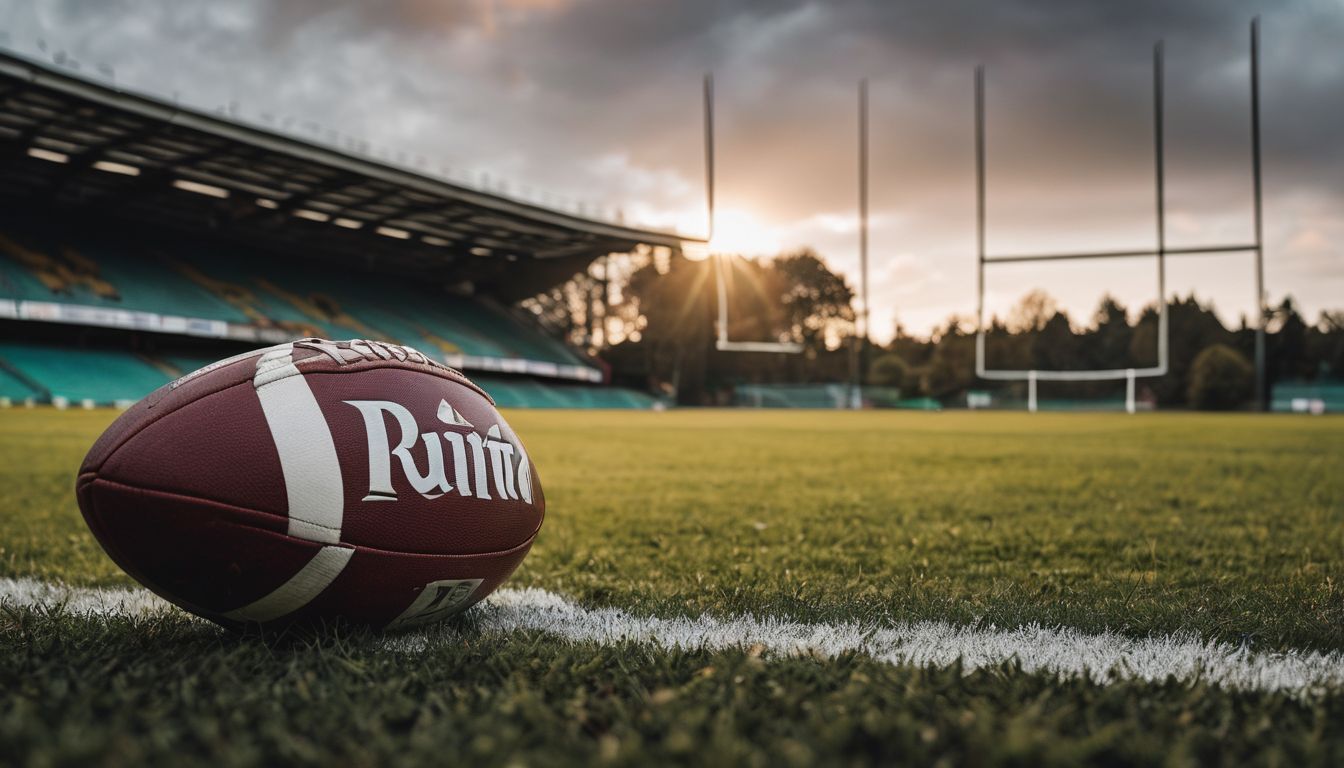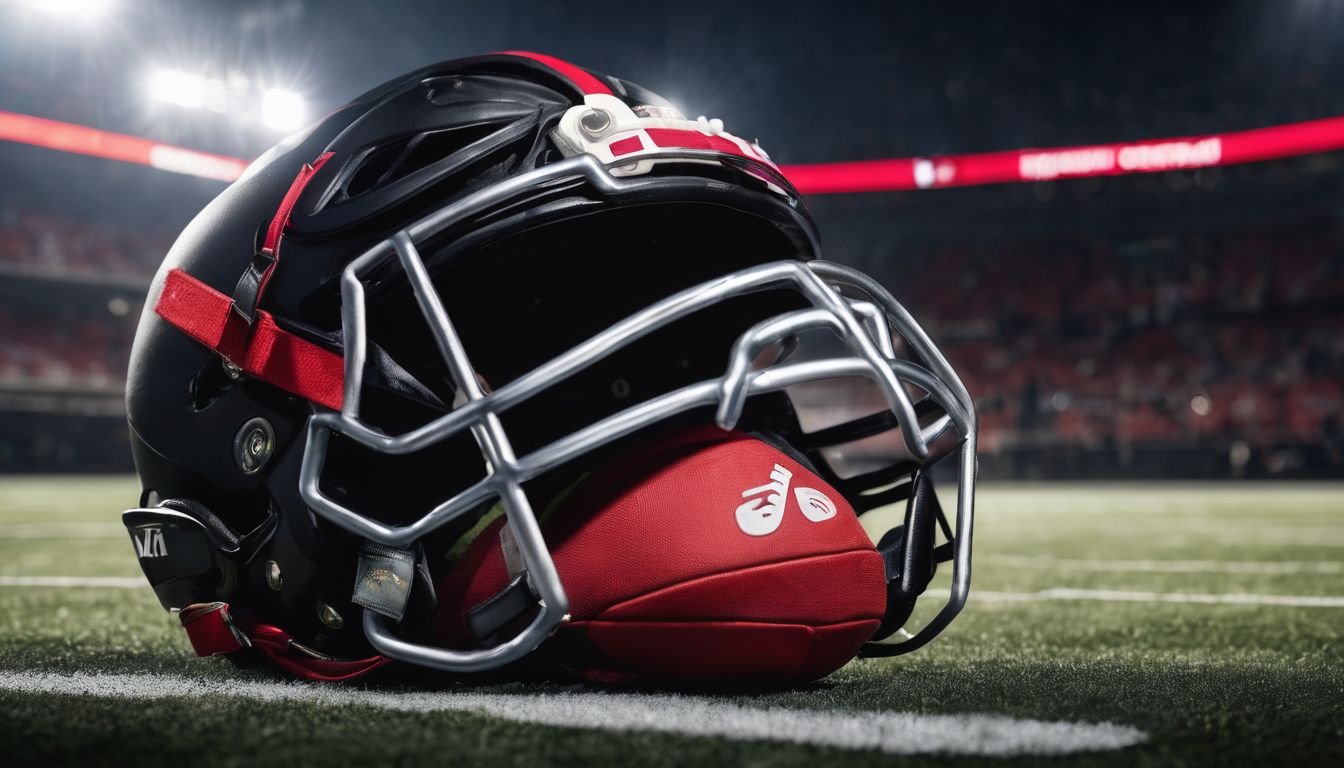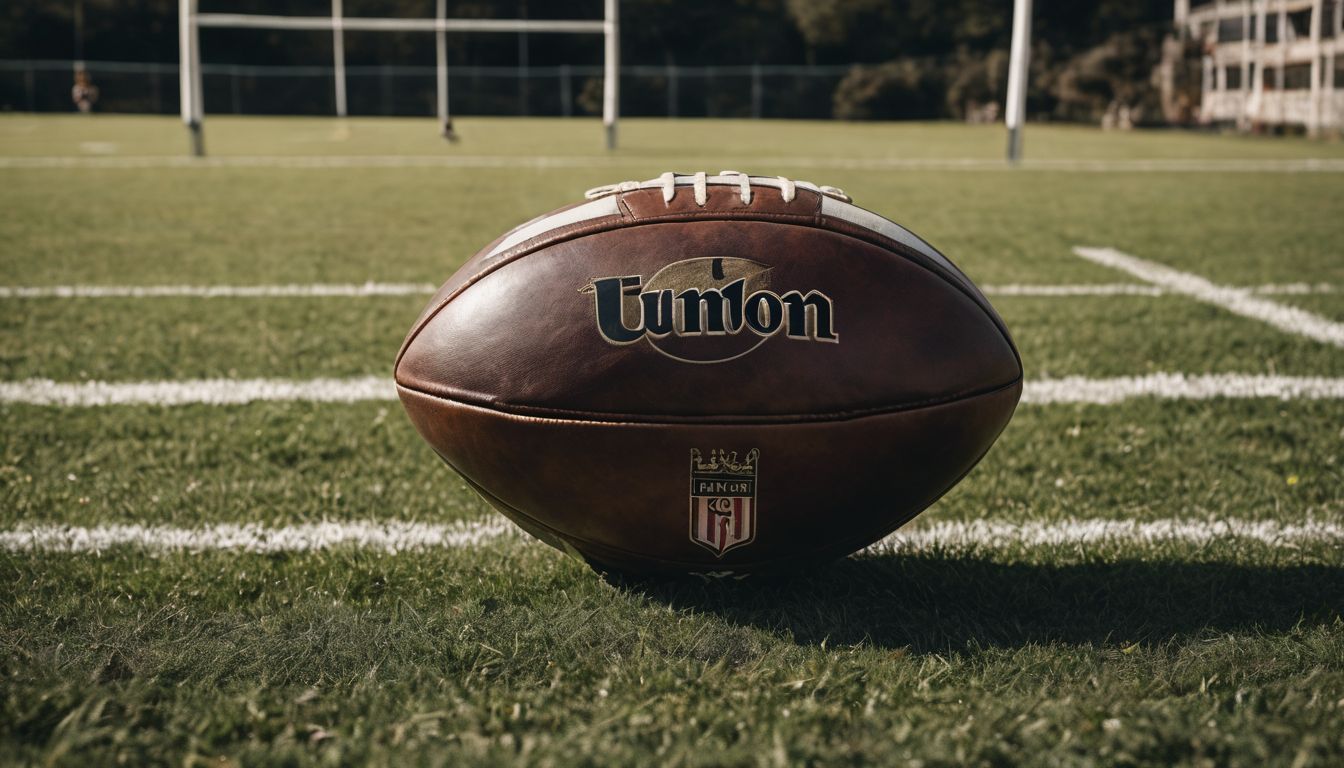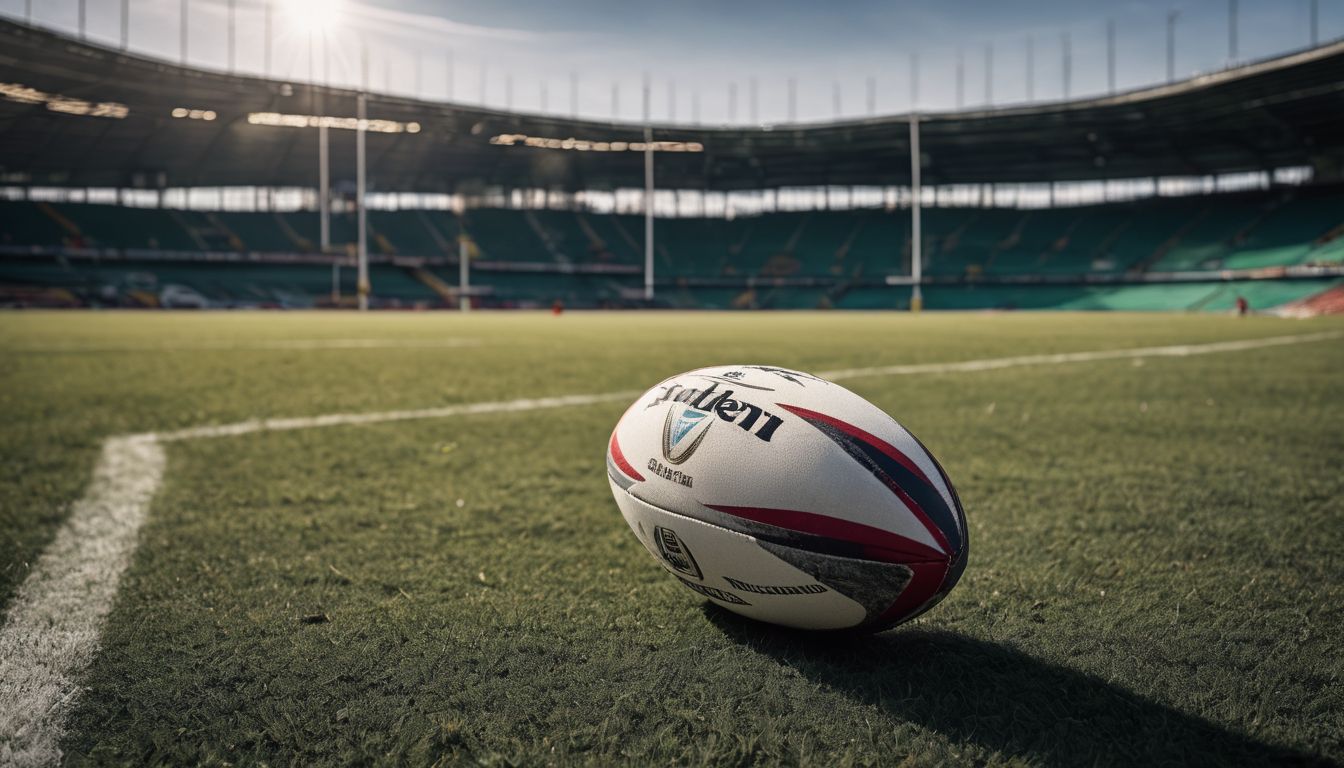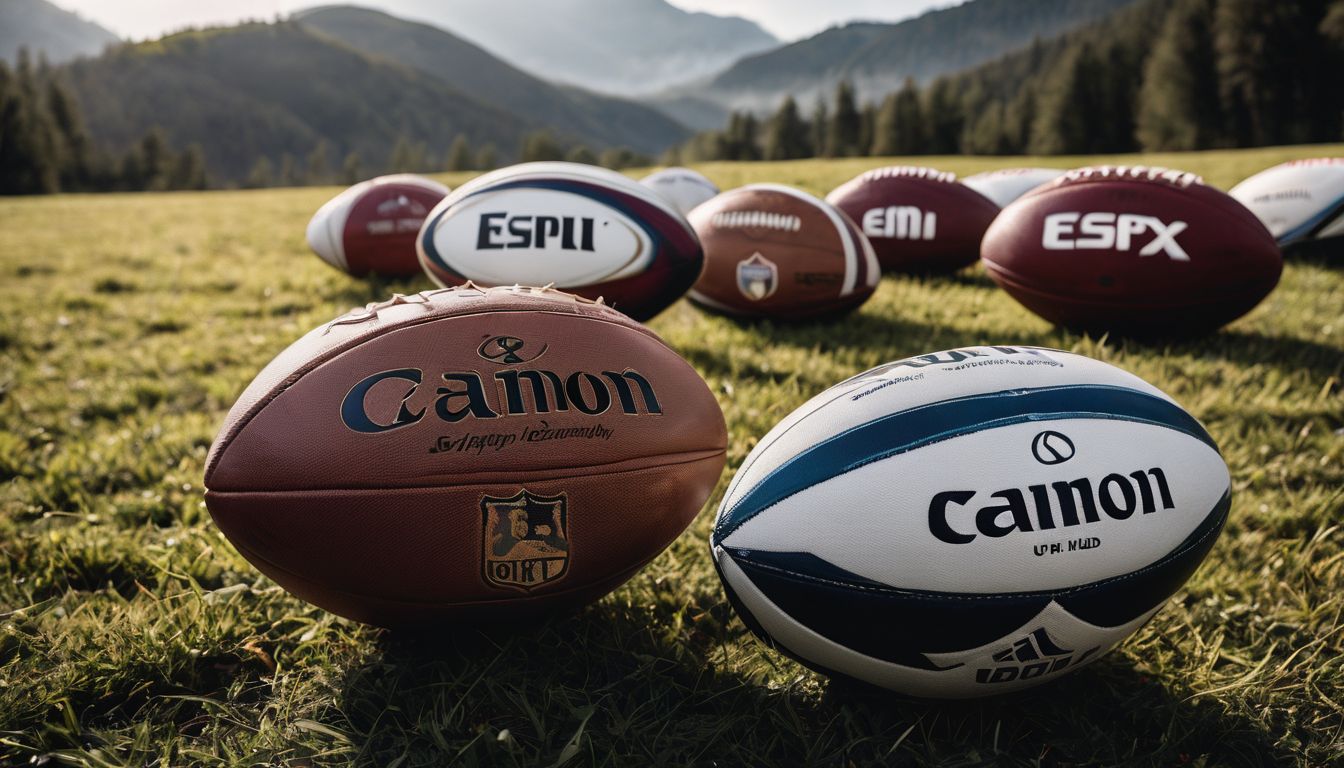Have you ever watched a game of American football and wondered why certain passes are flagged as illegal? The forward pass, a thrilling element that can change the game’s outcome in seconds, is only legal when executed correctly.
Our article breaks down the rules behind this key play, clarifying what makes a pass legal or not and helping you understand each whistle blow on the field. Get ready to master the ins and outs of one of football’s most exciting aspects!
Key Takeaways
- A forward pass in American football is a key offensive play where the ball is thrown towards the opponent’s end zone from behind the line of scrimmage.
- An illegal forward pass includes throwing the ball after crossing the line of scrimmage or attempting a second forward pass during one down, leading to penalties such as loss of down and yardage.
- Officials use their expertise alongside technology, like video replay systems, to identify and prevent illegal passes during games, thus maintaining fairness in gameplay.
- Players undergo regular training and practice sessions that include understanding rules, simulations and playbook revisions to avoid committing illegal forward passes on the field.
- The integration of strict rules around forward passing enforces fair competition by preventing teams from gaining an unfair advantage through improper execution.
Definition of a Forward Pass
The forward pass is a play in American football where the ball is thrown forward towards the opponent’s end zone. It is a crucial part of offensive gameplay and can lead to significant gains if executed properly.
Importance of the Forward Pass in Football Gameplay
In football gameplay, the forward pass changes everything. It unlocks new strategies, making plays more thrilling and unpredictable. Before its introduction, offences relied heavily on ground attacks.
This approach often led to stalemates as defences could easily predict and counter running plays. With the ability to throw the ball forward legally from behind the line of scrimmage, teams gained a powerful weapon to challenge defensive lines.
Quarterbacks now command the field with their ability to spot receivers and execute precision throws that can turn a game around in seconds. A successful forward pass can result in significant yard gains or even a spectacular touchdown when it connects with a receiver bolting towards the end zone.
Such dynamic offensive play adds excitement for fans and forces defences to adapt constantly, introducing an intellectual challenge alongside physical competitiveness that defines modern football’s appeal.
Rules Governing the Forward Pass
The forward pass is a crucial aspect of football gameplay, and its execution is governed by specific rules to maintain fairness and integrity in the game. These rules are designed to ensure that the forward pass is used appropriately and does not lead to unfair advantages or rule violations. Understanding the rules governing the forward pass is essential for players, officials, and fans alike. Here are the key regulations that govern the forward pass:
- The passer must be behind the line of scrimmage when throwing a forward pass.
- Only one forward pass is allowed per down.
- The ball must be thrown within the designated legal passing area, typically extending from one sideline to the other.
- The receiver of a forward pass must have at least one foot inbounds when making a catch.
- Once a player has crossed the line of scrimmage, they are no longer eligible to receive a legal forward pass.
Distinguishing Between a Legal and Illegal Forward Pass
- A legal forward pass occurs when the passer is behind the line of scrimmage at the time of the throw, while an illegal pass happens when the passer has advanced beyond this point.
- A legal pass can only be thrown once per down, while an illegal pass involves attempting a second forward pass following the initial one.
- In a legal forward pass, the ball must travel parallel or towards the opponent’s end zone, whereas an illegal one involves attempting to throw in other directions.
- Legal passes are caught by eligible receivers beyond or behind the line of scrimmage, unlike an illegal attempt that results in a player trying to catch it ahead.
- An illegal pass occurs if any part of the passer’s body is past the line of scrimmage before making a forward attempt, which doesn’t apply to a legal pass.
Examples of an Illegal Forward Pass
An illegal forward pass occurs when the ball is thrown beyond the line of scrimmage or when a second forward pass is attempted during a single play. Understanding these examples can help prevent penalties and maintain fair gameplay.
Pass Attempted Beyond Line of Scrimmage
An illegal forward pass occurs when a player throws the ball after crossing the line of scrimmage. This violation results in a penalty and loss of down for the offending team. The rule aims to maintain fairness and prevent teams from gaining an unfair advantage by passing the ball beyond where it is legally allowed.
Understanding this rule is crucial for players and fans alike, as it helps ensure that the game’s integrity is preserved. It also adds another layer of strategy to the sport, as teams must carefully navigate their positioning on the field to execute successful passing plays while avoiding penalties.
Mastering this aspect of the game can be pivotal in determining a team’s success on match day, making it an essential element for both players and spectators to comprehend thoroughly.
Second Attempted Forward Pass
An illegal forward pass occurs when a player attempts to throw the ball again after their initial attempt. This violates the rules governing forward passes and results in a penalty for the offending team.
The prohibition of a second attempted forward pass serves to maintain fairness and prevent teams from gaining an unfair advantage by repeatedly attempting to move the ball forward through passing.
The penalty for this infraction can result in lost yardage or even turnover of possession, significantly impacting the momentum and strategy of the game.
The rule against a second attempted forward pass was implemented to ensure that teams adhere to the fundamental principles and guidelines surrounding gameplay, contributing to maintaining integrity and balance within football matches.
Penalty for an Illegal Forward Pass
Penalty for an Illegal Forward Pass includes the loss of down and a five-yard penalty from the spot of the foul. This is imposed on the offending team, hindering their progress and putting them at a disadvantage.
The severity of this penalty reflects the rules committee’s aim to maintain fairness in gameplay and prevent teams from gaining undue advantage through illegal tactics.
The consequences for committing an illegal forward pass can significantly impact a team’s offensive strategy. It is crucial for players to adhere to these rules to avoid penalties that could potentially thwart their progress on the field.
Identifying and Preventing an Illegal Forward Pass
Officials play a crucial role in identifying and preventing an illegal forward pass, but technology and review systems, as well as training and prevention methods, also contribute to maintaining the integrity of the game.
Read on to understand how these measures help keep the gameplay fair and competitive.
Officials’ Role
Game officiating is crucial to ensuring that forward passes are executed within the rules. Referees and other officials play a vital role in monitoring and enforcing regulations related to the forward pass.
They must watch closely for any illegal attempts, such as throws made after crossing the line of scrimmage or second attempted forward passes. These officials have the responsibility of penalising players who violate these rules, which can result in significant yardage penalties or even turnovers.
The quick and accurate judgement of game officials ensures fair play and upholds the integrity of the sport while keeping an eye on pass interference during gameplay.
Technology and Review System
The technology and review system play a crucial role in identifying and preventing illegal forward passes in football. Video replay technology allows officials to review questionable plays and ensure that the rules regarding forward passes are upheld.
This helps to reduce human errors and ensures fair gameplay. The introduction of this technology has significantly improved the accuracy of officiating, leading to a more balanced and equitable game for all teams involved.
Furthermore, training programmes are also utilising video analysis tools to educate players on the proper execution of forward passes, thus reducing the likelihood of illegal attempts.
Training and Prevention Methods
The training and prevention methods for identifying and preventing illegal forward passes are crucial for football players, officials, and coaches. Here are some essential techniques to address this issue:
- Regular Training: Players should undergo regular training sessions to understand the rules and regulations regarding forward passes.
- Rules Review: Coaches should conduct frequent reviews of the rules governing forward passes to ensure that all players have a comprehensive understanding.
- Video Analysis: Utilising video analysis of game footage can help players identify instances of illegal forward passes and learn from their mistakes.
- Referee Communication: Open communication between players and game officials can help clarify any confusion regarding the legality of forward pass attempts during a game.
- Tactical Workshops: Coaches can organise tactical workshops to teach players how to execute legal forward passes effectively as part of offensive strategies.
- Playbook Revision: Continuous revision of offensive playbooks is necessary to incorporate legal forward passing plays while avoiding penalties.
- Simulation Drills: Organising simulation drills in practice sessions helps players understand when and where they can execute a legal forward pass on the field.
- Game Situation Repetition: Repeatedly practising game situations involving legal forward passes will enhance player awareness when executing these plays in actual games.
- Sportsmanship Emphasis: Instilling sportsmanship values among players will encourage fair play and adherence to the rules concerning forward passes.
Conclusion
In conclusion, understanding the definition and implications of an illegal forward pass is crucial in football. This violation can result in penalty yardage for the offending team.
Officials play a pivotal role in identifying and penalising illegal forward passes during gameplay. Preventing these infractions requires consistent training and the use of technology for accurate review, ensuring fair play on the field.
FAQs
1. What is a forward pass in football?
A forward pass happens when the quarterback throws the ball to a teammate heading towards the offence’s goal line, and it’s meant to move their team closer to scoring in the end zone.
2. Why is a forward pass considered illegal?
A forward pass is illegal if it’s thrown after the ball has already moved past the line of scrimmage or if thrown from beyond that point, which results in breaking game officiating rules and leads to penalties.
3. What consequences does an offence face for making an illegal forward pass?
If an offence commits an illegal forward pass, they get penalised with loss of yardage, which means they must give up penalty yardage and might lose their chance at down conversion.
4. Can a player catch their own Forward Pass if no one else touches it first?
No, players cannot legally catch their own forwarded balls; this would count as an incomplete pass unless another player intercepts or makes reception before it hits the ground.
5. What happens if nobody catches the Forward Pass?
If nobody catches it, then it’s ruled as an “incomplete pass”, meaning that play stops immediately and typically resumes from where they tried throwing without any change in down conversion.



